The Ultimate Guide to Off-Page SEO
With a plethora of complex algorithms, Google is consistently improving in understanding the searchers’ intent. No longer does it rely solely on popular keywords instead, deliver quality content that can address the users’ requirements. One of the primary objectives of Google is to enhance user experience.
Off-Page SEO helps the business to fulfill the Google’s primary requirements. Off-Page SEO involves improving search engine and user perception of a site’s popularity, relevance, trustworthiness, and authority.
As the year progresses, new trends suddenly pop up, giving the whole world some new things, and some novel techniques of marketing. For website owners, this gives them some new off-page methods. Strong backlinks are still at the forefront of off-page SEO. This helps you get more viewers into your website and make your website get a better Google ranking.

Table of Contents
What is Off-Page SEO?
Why Off Page SEO is Important?
How to Do Off Page SEO?
Off-Page SEO technique, is sometimes called off-site SEO or Link Building. This guide will help you through the key things you need to look at if you want to perform off page properly.
What is Off-Page SEO?
Search engine optimization can be broken down into two parts, off-page and on-page SEO. On-page SEO consists of factors that a website owner can directly manipulate on their site. Off-page search engine optimization refers to the digital signals, outside of one’s own website that marketers can influence indirectly. Off-page SEO is not always just about backlinks. Off-Page SEO is all about building your reputation by developing relationship with all the internet channels.
It refers to all the measures that can be taken outside of the actual website, in order to improve its position in search rankings. These measures are meant to reflect your website’s social credibility and industry authority.
Off Page SEO is deeper than it looks. Smart bloggers don’t just rely on backlinks but they create brand awareness and create social signals. Off-page SEO simply tells Google what others think about your site. There is a lot to take in when it comes to off page SEO, but we’ve broken everything up into three parts:
- Backlinks to the website
- Brand Mentions
- Social Signal around your website
What is Backlink?
Backlink is the hyperlink from outside domains that point to the pages on your domain. To achieve higher rankings on search engine results, you need to compete with other websites. Backlinks help to get the vote if it wants to rank on first page. Backlinks can be counted as a “vote” of confidence for the content that’s being linked to on your domain from outside sources.
Search engines use links to crawl the web; they will crawl the links between the individual pages on your website, and they will crawl the links between entire websites.
Moz has categorized backlinks into three depending on the nature of their existence:
- Natural Links are editorially given without any action on the part of a page owner. To achieve these types of links, you need to give a good reason to someone to do so.
- Manual Links are acquired through deliberate link-building activities. This includes things like getting customers to link to your website or asking influencers to share your content. It involves manually contacting website owners and bloggers, asking them to link to you. Again, you need to give them a reason to link to you, and to be successful, you need to be contacting people who are relevant.
- Self-Created Links are created by practices such as adding a backlink in an online directory, forum, blog comment signature, or a press release with optimized anchor text. They inherently carry less weight than the other types of links.
Backlinks can affect your organic rankings to varying degrees, therefore the practice of creating backlink should be done carefully. Follow two important factors such as:
- Relevance
- Authority
You can have the most authoritative backlink in the world, but if it’s not relevant to your niche or industry, your pages will have difficulty ranking well. On the other hand, if you have a highly relevant backlink from a site that doesn’t have any authority in your industry, you’re still going to find it difficult to rank.
What is Brand Mention?
Google loves brands and prefers to rank branded websites on top of the results. While Google does give value to brand mentions, even if they are unlinked, links provide far more SEO value as the primary off-page ranking signal.
According to Neil Patel, “Brand Mentions (your site URL or brand name mentioned on another site without a hyperlink) are an integral aspect of off-page search signals.”
Increase brand mentions by engaging with high-quality backlinks, social media audiences and work to provide valuable answers whenever possible to build authority and trust.
Turning brand mentions into links also gives you the opportunity to establish new relationships with other authoritative sites. This improves your chances of getting even more links from their sites, which serves you in the long run.
When it comes to off-page SEO, brand mentions seem to be just as important as backlinks to your website.
What is Social Signal?
Social Signal means sharing your link on social platforms which create no-follow links and generate relevant real traffic to your site. The importance of social signals is increasing with time so improving online visibility or brand awareness, positive reviews and decreasing bounce rate.
Websites with a strong social presence are more easily shareable and accessible, and thus easier to recommend. Search engines can also analyze these shares as recommendations, boosting the credibility (and rankings) of the website.

Why OFF Page SEO is important?
If you’re going to compete and thrive online, you need to create exposure, trust, brand awareness and a sense of authority. Popularity, quality, and relevance are also important to the website.
Off Page optimization is tremendously valuable because it tells search engines that your website is important to others on the web. Every link that you receive acts as an endorsement from another source that your website is top quality. Off Page SEO indicates how the world perceives your website, and establish your brand awareness.
Google takes into account many off-page factors when deciding if and where to rank web pages. Links are one of those factors, but there are many others.
More Business Exposure: When a website ranks in the top positions: it gets more links, more visits, and more social media mentions.
Higher Rankings & Traffic: The website will rank higher in the SERPs and this also means more organic search traffic.
Establish Trustworthiness: Google has recently introduced the concept of Expertise, Authority and Trustworthiness (E-A-T), which plays an important role in rankings and is directly related to off-site SEO.
Improves Domain Authority: If part of your off-page SEO strategy includes building backlinks from high-profile websites, you should notice a pop in your DA.
How to do OFF Page SEO?
SEO is a complicated subject and it’s constantly changing and evolving. As Google changes its algorithms, SEO need to keep up with the changes. As you can see, much of off-page SEO has changed throughout the year thanks to Google’s algorithm updates. Quality links and content are rewarded, and those who don’t abide by Google’s guidelines are penalized.
Off Page SEO make your brand shine in a sea of other brands, all fighting to get among the first position in SERPs.
Let’s get to the ultimate off-page SEO techniques checklist and learn some lessons for future marketing strategies.
Link Building
Link building is the most popular marketing technique that can help improve your website position in SERP. Search engines take into account both the number and quality of your backlinks (as well as the number of referring domains), but quality is much more important than quantity.
It has been recommended that a single quality backlink from an authoritative site is worth more than 10 or even 100 low-quality links.
Links are translated as votes or applause to your website, an overall appreciation of your brand.
Links are of two different types:
Nofollow Backlinks:
If a link is set to nofollow, it means Google bot won’t crawl the link and won’t pass any link juice.
<a href= url rel=”nofollow”>Example1</a>
<a href= url rel=”external nofollow”>Example2</a>
Both of the above links having nofollow keyword in their real tag, which means they are nofollow links. Even though nofollow link doesn’t pass any link juice, it helps you to bring traffic towards your website, so if you are making No follow links then there is no harm.
Dofollow Backlinks:
Dofollow link passes link juice and they definitely help you much, in order to achieve good page rank. As it instructs search engine spiders to follow this link.
<a href = url rel=”external”>Example3</a>
If you find no rel attribute in link then also it’s being treated as a dofollow link.
Let’s talk briefly about each off-page SEO activity below.
Influencer Outreach
Add a community-driven section to your article and reach out to well-known influencers in your niche and request that they provide their valuable insight via feedback, quote, or a review. Start connecting with them, but beware, you have to make sure you don’t overlook them in time. Keep in touch with them, ask for their advice and feature them in your pieces of content.
Guest Post
Become guest author. Be fair, and make giving actionable, fresh, and relevant information to bloggers without starving for backlinks. There are a number of blogs open for the guest post. You just need to identify the keyword you’re interested in and then search on Google. By writing guest posts from time to time, it will help you build quality backlinks, trigger more organic traffic to your website, and display a professional conduct by writing to others too.
Broken Link Building
Broken link building is an interesting strategy that involves finding resources in your niche that are no longer live, recreating a version of the content and reaching out to webmasters who link to that content asking them to replace the broken link with a link to your newly created resource. By looking at the competitors’ broken link, you can hit the jackpot on time saving. Being a competitor, it’s likely that we have content similar to what our competitors had on their website already.
Make broken link building faster by using the broken links report in Ahrefs to find broken pages on your competitors’ websites.
Forums Posting
A forum is an online discussion site having a ton of authority that can help boost the authority of your own site.
Forums posting is very effective part of link building because with forums posting your websites will have do follow quality one way links and also receive lots of organic traffics. Forums help you drive targeted traffic to your site and allow you to establish relationships with influencers in your industry.
Find forums related to your industry and a sub-forum that focuses on your industry.
Blog Commenting
When blog commenting is used properly, it can help gain exposure and form blogger-to-blogger relationships, when you engage with others in your niche by posting value-added commentary and support to other bloggers. Consider commenting on relevant blog posts where you can add valuable and helpful commentary, based on your expertise on the subject. You can mention your brand inside the body of relevant and useful tips, and make its appearance relevant there.
Incorporate Videos and Images
When Google crawls your site they are looking for several indicators including page quality, relevance and keyword instances. Multimedia objects add value to all three of these metrics. Videos also increase a user’s Time On Page, an important indicator of page quality which seems to becoming more and more important every day. Off-site SEO is about getting attention to your website thanks to outbound activities, unrelated to your page contents. Hence, promote your business through videos, podcasts, infographics, quotes etc.
Social Bookmarking
While some internet traffic is direct or the result of natural search, a good proportion of it comes through referrers. Social bookmarking is a way of storing, organizing and searching for bookmarks of sources online with the help of metadata.
Social bookmarking sites can help build one-way links, to increase your brand’s visibility and drive small quantities of traffic that’s more relevant to your website.
Content Marketing
SEO has that quality content generates natural links. To earn links in today’s crowded content world, you need to take your stuff to the next level.
The first step is to find keywords in your niche that you can frame your content around. Find holes in the reigning content so that you can create something even better. Include your keyword in your page’s URL and include your keyword in title and description.
Quora Answering:
One of the most common ways SEO professionals leverage Quora is to include it as part of a comprehensive link building strategy.
Benefits:
- The content lives on the page it was added to permanently
- Posts by content creators have significant potential to be seen by more users than just their own followers
- Question pages create links search engines actually index
Below is a list of the types of links you can create on Quora that include this attribute:
- Answer submissions (both in the content body and as footnotes)
- Answer Wiki’s (requires admin approval)
- Self-published blog posts
- Submitting a link to Spaces (requires admin approval)
- User profiles
Press Releases:
Press Releases are a way of distributing and announcing events to the press. Google defines them as “an official statement issued to newspapers giving information on a particular matter”.
Write a piece of content that will then be distributed to news publishers that might be interested.
Having information about your company or an event published on big news sites is not only beneficial for your brand, but also for SEO.
It will help you build links rather quickly, the links are high quality and they’re all also completely natural and won’t result in any penalties.
Effective Link Building Techniques That You Should Follow

People often lose out on their passion while continuing in this rat race of the world. Chasing their dreams has its charms. Nowadays, many people are taking up off-beat career options to fulfill their dreams. Few of the most off-beat career options include Website Designing, Content Developers, SEO Experts, Photography, etc.
One of the most popular among this is the role of a website designer. Web design refers to designing the websites as per the user requirements and experiences. A web designer focuses on fulfilling the necessities of a user rather than software development. There are a lot of aspects to consider while building a website. One important point to consider in making a successful website is link building.
Link building ensures that the website is easily discoverable by Google and users all over the world. So link building marks the base of success for the website in the cyber world. Studies show that if one is blogging consistently, one can get 434% catalogue pages more. However, one needs to follow the appropriate steps to build the links correctly for a specific website.
What Is Link Building?
Link building is the first step in building a platform for the website to reach the masses. So, link building is the process of linking different websites to one’s website. The business owners and the different marketers ensure to follow this path to increase their online client list exponentially.
Thus, link building is the procedure of substituting links with other Web sites to upsurge one’s own site’s backlinks. However, it is the most challenging aspect when it comes down to SEO.
What Is SEO?
SEO is the procedure of enhancing one’s website to get un-paid, essential traffic from the search engine results page. It is an abbreviation of search engine optimization. As the name itself suggests, it involves making definite changes which can make a website more attractive. SEO targets to make changes in both the contents and the design of a website to make it productive. Therefore, SEO is a tool which glorifies the website and helps it to appear in the top search results.
Consider These Few Aspects Of SEO While Designing A Website:
• Give the focus on technological performance. Study shows that 40% of individuals leave a website that requires more than 3 seconds to load
• Needs to create high-quality, readable content to attract the readers
• Carefully use the keywords within the text accordingly
• Make the reading trustworthy
• The website should be made taking the user’s point of view
• Focus on proper usage of grammar
Thus to maintain these aspects of SEO, link building is essential. Building links is the strategy used in SEO for maximum benefits. That’s because links act as a signal to Google that the site is a quality resource worthy of citation.
What Are The Tricks For Effective Link Building?
Once understood how relevant building links are, then one needs to know how to do the job. People utilize a lot of tricks to build connections. However, one should be very clear about their plan of how to build the links for the website. Some of the standard and beneficial tips for creating the tricks are :
• Ask for the backlinks to start with: One should begin with their contacts that have blogs or websites to build their links. Only that the backlinks should be relevant to the content of one’s website.
• Establish good relationships: healthy relationships are necessary to build up new links. One can start from their niche-related communities: blogs or social groups, forums, etc.
• Construct captivating content: People like to link to a site with compelling and relevant contents
• Use the media to broadcast: Use press releases and media forums to attract links to the content.
• Create and allocate Infographics: Start with this aspect today and see how it helps to build links in the future.
• Make use of Resource Links: Resource links are useful to build up links if taken from trusted sites.
• Establish your brand: Growing one’s brand would ensure the increased probability of generating more links to the site.
• Keep a check on the competitor’s backlinks: One can also refer to the backlinks of the competitor to understand if they are on the right track.
Let Us Understand The Utility of Building Links In Detail:
So, now we know what exactly SEO is and how link building is associated with SEO. But why is this link building so important? That’s because:
• Google’s #1 ranking factor is the links
• They are key aspects of a great content
• They send correctly qualified traffic to the site
• Helps people to discover the site through Google’s recommendation
• Helps to build a relationship with potential readers
• Helps to build up the sales rate of the website
• Assists in the promotion of a brand associated with the website
• A website gets more visibility
• People can trust a website to be a reliable and trustworthy source of information
Research shows that organizations that blog have 97% more links. Thus, building proper links are useful in bringing success to any website on the social front. Consult with SEO Consultants India for more information about our services.
4 Concepts of Link Building & Google Rankings You Should Build Upon

If you think “keyword” is the most important factor contributing to higher page rankings on Google, think again. Link building, along with content marketing, is the most vital “external signal for Google’s search rankings” today. The giant search engine relies heavily on quality links as a way to determine authority and relevancy.
Links to websites are “votes” that Google uses to rank web pages on Search Engine Result Pages (SERPs). The higher votes a page has, the better are its chances to have an improved ranking in search results. However, merely having more links to your website will not get you higher rankings; thanks to Google’s evolving algorithms that now focus on authority and relevance of the link to determine the page ranking in search results.
Keeping in mind the growing complexities of Google algorithm, we have outlined four crucial concepts of link building & Google rankings that you can leverage to stay ahead and garner top page rankings.
Key Concepts of Link Building & Google Rankings
Having a successful link building campaign can be challenging. Linking with the wrong websites may not only affect your website ranking in search results but can also get it penalized by Google. 65% of the marketers believe that link building is the most complex SEO tactic today, while 41% affirm that is the biggest challenge in Search Engine Optimization.
As Google continuously changes the way it views page links, it can be tricky to master the art of link building especially when it is mostly about authority and relevance. Check out the simple tactics that you can harness to get organic rankings for your site.
- Anchor Text
Google’s initial PageRank patent incorporates a lot about anchor text. It states:
“Thus, even though the text of the document itself may not match the search terms, if the document is cited by documents whose titles or backlink anchor text match the search terms, the document will be considered a match.”
Links with anchor text relevant to the topic or links from pages with the relevant topic can be a powerful signal for Google to rank your page higher for related search terms. To leverage anchor text for higher page rankings, use the following best practices:
- Use anchor text that clearly describes what the pages are all about. Seek links with such descriptive anchor texts only
- Make sure you avoid anchor text that is generic in nature or is not relevant to the topic
- The anchor text should be short and precise. It should not be more than 5-6 words on an average
However, ensure you do not over-optimize your anchor text or it can signal manipulation to the search engines. Use a variety of anchor texts to get higher rankings, suggests the experts.
- Topic-Relevant Google PageRank
Another link building tactic to boost Google ranking is using “Topic-Sensitive PageRank” to dispense topic relevance from “seed pages” to all linked pages. Using this technique, you can distribute various kinds of ranking signals all through the search index. Trust, popularity and topic relevance are the most important signals that you can assign throughout the linked pages for higher rankings.
To improve your page relevancy for Google ranking, group all “seed pages” based on their topic. Every link that goes out from the seed pages should distribute certain Topic Sensitive PageRank. The next set of outbound links will then pass on the same topic-relevant information, and so on.
To leverage this technique, try obtaining links from pages that have similar topics you want higher rankings for. Similarly, link to pages that are linked to authoritative pages with the same topic.
- Authority Pages
An effective link building strategy is to have links from “expert” pages. An expert page is one that is linked to several pages with a relevant topic. If your page displays links from various expert pages, then Google will consider it as an authority on the topic, giving higher page ranking.
“…a goof hub is a page that points to many good authorities; a good authority is a page that is pointed to by many good hubs.” – Authoritative Sources in a Hyperlinked Environment.
Obtain links from “Resource Pages” of a website. The section typically includes Expert/Hub pages that are linked to from authority sites on a topic. Getting links on such pages can help improve your Google ranking.
- Phrase-Based Indexing
This technique allows Google to determine link relevancy by considering the related phrases in the target and source pages. The more related the phrases are, the higher will be the relevancy score. It is recommended to get links from various pages having related phrases. This is particularly useful for internal linking or on-page SEO.
Conclusion
To leverage the concepts of link building & Google ranking, try to attract and get organic links to your website with topically relevant, high-quality content. The above techniques will not only help you build authority but will also help improve relevancy and page ranking on Google.
A 10-Step SEO Plan for Higher Search Rankings in 2019

Planning your SEO strategy will give you set milestones for success. Having an organized strategy will help you and your marketing team stay on track. It will also help you measure the rate of success/failure in a systematic fashion. Studies show that over 51% of the total website traffic on an average comes directly from organic search. These figures are proof that having a leak proof SEO strategy is critical for the growth of every online business.
Here is a concise 10-step actionable SEO plan that will help you get higher search rankings in 2019.
Step 1: Understanding the Base of SEO
Before diving deep into the technical nuances of SEO, you need to understand the reason why SEO is important. You also need to understand the different ways in which it will directly affect your business. Understanding the base of SEO may take you few hours to a few days.
Do not try and learn everything about SEO in the first step. Instead, consider the learning as a gradual process and scrape the surface of the subject.
Step 2: Understanding the Technical Nuances of SEO
Once you have understood the basics of SEO, you can start defining the different ways in which it will affect your business. At this point, you might want to hire professional help and get in touch with an SEO consultant to understand SEO in depth.
Step 3: Talk to Your Customers
Novice digital marketers often commit the mistake of designing a full-fledged SEO strategy before listening to their customers. They do not take the needs of their direct customers and prospects into account. Understanding the needs of your target audience is the first step towards the success of every digital marketing strategy. You can easily host campaigns and webinars to interact with your target audience. You might need to incentive the enrollment process if you don’t get a lot of prospects in the first few webinar sessions. Over 51% of internet consumers use mobile and tablet devices to access the internet.
Step 4: Perform Market Research
It is important that you talk to your customers before performing market research. This helps you get an unfiltered opinion. If you do perform market research before talking to the customers, you might end up with highly opinionated and one-directional vision. This is also the step where you gauge the needs of the market at a high-level and identify the market trends. Market trends suggest that the companies in the U.S. alone will spend over 72.02 Billion dollars on SEO.
Step 5: Perform Competitive Analysis
Identify your business proposal’s USP (Unique Selling Point) and perform competitive analysis to develop a SWOT (Strength, Weakness, Opportunity, Threat) analysis for the product/service.
Step 6: Curate a List of Topics
Now that you have a list of your USPs and the market trends in place, you can easily curate a list of topics for content that will suit the needs of your target audience. Creating a long list of topics for the content will ensure that you do not run out of ideas any time soon. 45% of companies consider content marketing as the key component of their SEO strategy.
Step 7: Develop Content Strategically
You cannot afford to ruin a trending topic for an article with bad content. Therefore, you should have a good content management system in place. This powered by a strong team of content developers can easily help you engaging content for the audience.
Step 8: Optimize Content for Search Engine and Get Listed
You don’t always need to develop fresh content for your website to get higher search rankings. Instead, you can optimize the existing content too. Revamping the existing content with more SEO-friendly pointers will help you bring down the overall cost and get a better ROI.
Step 9: Focus on Promotion
Developing great content is not enough. Instead, you need to lay enough emphasis on the promotion aspect too. A balanced focus on organic and inorganic SEO methods will help you get the best results in the long run. Leverage all the social media and blog channels that you have, to divert more traffic to the website organically.
Step 10: Focus on Backlink Generation
The most popular websites on the internet have backlinks from reliable sources. You need to garner the same amount of respect and reliability by acquiring more backlinks from these sources. Various websites like MOZ and SEMRush can help you get a list of all the backlinks that your strongest competitors have. Over 41% of large companies think that link building is the toughest SEO tactic.
Apart from these steps for SEO, you also need to invest time into good web development practices to keep the customer engaged for a longer period. You can learn the critical SEO skills on the internet by participating in online SEO courses. Some popular websites that can help you learn SEO at a technical level include Udemy, SEMRush, MOZ, etc.
Long‐Tail Keywords: The ‘Secret’ to Getting TONS of Search Traffic

With rising in competition in the digital marketing landscape, it is hard to make your mark on the internet using conventional SEO strategies. Today, you need to take the voice search and other SEO parameters into account to make a considerable impact on the online market. A good amount of focus on keyword research and analysis is the first right step towards a successful online business. Recent studies show that long-tail keywords are responsible for nearly 70% of the total searches on the internet.
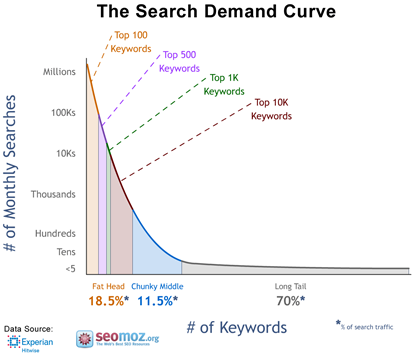
Here are 10 main reasons why long-tail keywords are the ‘secret’ to getting tons of search traffic.
Understanding Long-Tail Keywords
As the name suggests, the long-tail keywords are the ones that are longer than conventional keywords. The conventional keywords usually contain less than 4 keywords, while the long-tail keywords contain 6-7 keywords. Most search engines rely on the accuracy and relevancy of the keywords to produce search results. Therefore, a higher number of keywords produce more relevant searches. People usually leverage the long keywords when they are looking for highly specific and factual information.
Importance of Long-Tail Keywords
The long-tail keywords are extremely important for a growing online business. These keywords are generally cheaper compared to the conventional short keywords. Also, they can produce extremely focused and sales-ready leads to your business. Some key benefits of the long-tail keywords include.
- Effective for On-Page Optimization
Every SEO specialist knows that there are mainly two different modes in which he/she needs to optimize the website for better conversion. The specialist needs to focus on both on-page as well as off-page optimization. The long-tail keywords can help the specialist effectively raise the stats for on-page optimization without a lot of extra effort. A study from Statista shows that 50% of your efforts for SEO on the long-tail keywords should lie on on-page optimization.
- Optimized for Voice Search
The use of voice search is constantly rising today. The most popular voice assistants Google Assistant, Siri, Alexa and Cortana are quickly gaining popularity on their native mobile as well as desktop interfaces. According to a recent study, voice search is one of the biggest SEO trends that the specialists focused on for 2017.
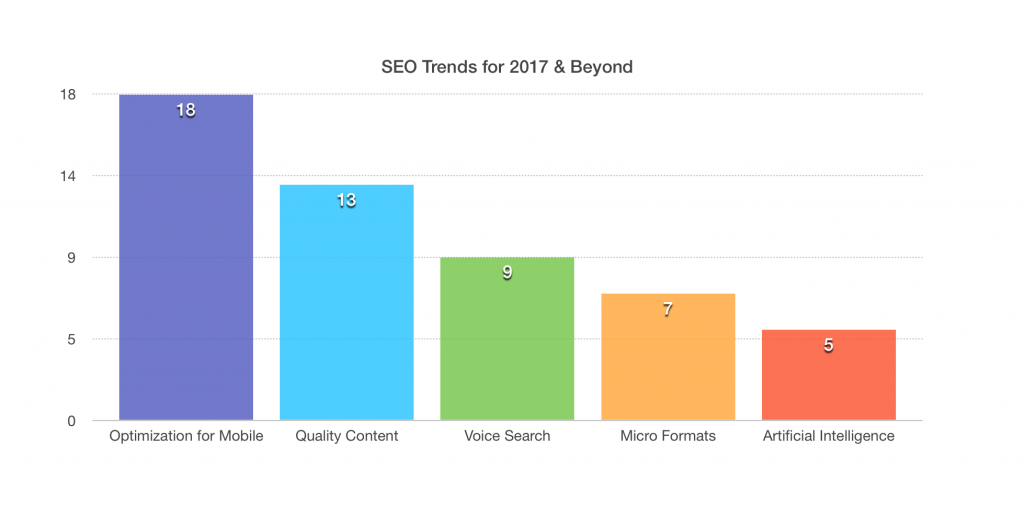
- Addition of Relevant Content
The best part about long-tail keywords is that they fit naturally into the content. You cannot ‘stuff’ a lot of long-tail keywords into the content without losing its overall grammatical structure. The use of multiple long-tail keywords preserves the overall readability of the content while still allowing you to leverage the perks of the best SEO practices.
Note: The use of long-tail keywords is effective only when you have a long list of them. Using the same long-tail keyword hampers the overall readability of the content significantly.
- Great Conversion Rates
The conversion rates of the long tail keywords are significantly better than the conversion rates of conventional shorter keywords. Studies show that the long-tail keywords have a conversion rate of up to 36%! Better conversion rates are a direct result of more sales-ready leads coming into the pipeline. With long-tail keywords, you have a better chance of targeting people who wish to purchase your product/service. The right tactics allow you to easily segregate the audience which is looking at your offer only for research and the one that is looking at it for purchase.
- Affordable Prices
The number of searches directly related to long-tail keywords is not as high as the ones related to the shorter ones. Therefore, the long-tail keywords are usually available at a smaller price tag on the Google AdWords platform. The affordable prices and excellent conversion rates come together to produce an excellent return on investment for the business.
Tips for Performing Your Own Long-Tail Keyword Research
Before we reap the benefits of the long-tail keywords, we need to perform the right kind of keyword research. Focused keyword-research can help you look for the most relevant and affordable keywords for your business. It can also help you evaluate the competitive landscape of the market effectively.
- Search Keywords Based on Ideas
Searching keywords based on particular themes is a good idea to start the research. As you refine your search further you can branch it to involve other methods of research too. For example, you are searching for keywords for a toy shop on the internet. To do this, you can easily search for keywords that include the word toy. Now, you should look at your collection and add keywords naturally to it. If you have soft toys, you can build the keyword to soft toys now. Furthermore, the keyword string at the end of your research will look something like, ‘Yellow giraffe stuffed soft toy with natural colours for sale.’
- Look for Keywords that Fit Naturally into Your Content
Keywords that fit naturally into your content increase the overall readability of your content by a significant amount. With the right type of keywords, you can write relevant blogs and guest posts for different websites. These long tail keywords can also help you in landing pages as well as ad campaign designs. One of the best perks about using the long tail keywords is that they are effective even at a low density. Instead of using the same keyword twice or thrice in the content you can use variations to increase the readability of content.
- Focus on Local Search Results
Research suggests that as much as 43% of the total search queries on Google have a local search intent. Therefore, you must focus on keywords that help you gain more business locally. This type of practice is extremely helpful for businesses that are demographically challenged. For example, if you are creating a website that offers transportation services in Denver, you need people from Denver to see it.
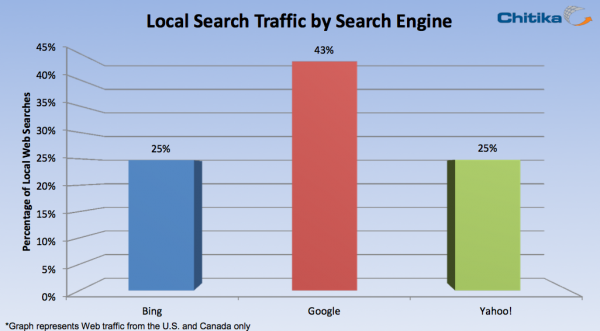
- Stack Keywords Together
Instead of creating long-tail keywords within a single attempt, you can do so by stacking shorter keywords together. Look for the most relevant short keywords and stack them together to create a long-tail keyword for your business. For example, if you want to create long-tail keywords for a transportation business in Denver, your target keywords include Denver and transportation. You can couple these to create keywords with relevant adjectives that look like the following:
- Cheap Denver transportation services for visitors
- Most affordable transportation services in Denver for tourists
- Denver to Vail shuttle services directly from the airport
- Use Extremely Simple Language
The use of simple language in keywords increases the overall readability of the content. The simple language increases customer retention as well as acquisition. Use shorter words and concise language along with facts and figures to add value to the content. The development of ‘How-To’ content is also favourable in the market. Balance the amount of promotional and informational content effectively to lure the customers in for your business.
Tips on Using the Long-Tail Keywords Effectively
Here are a few tips that will help you reap the benefits of long-tail keywords in the most influential manner.
- Use Plurals of Keywords
The use of plural words in your keywords will help you optimize the keyword further. For example, instead of developing a keyword like ‘Soft giraffe toy for child’ develop one that says ‘Soft giraffe toys for kids.’ Small differences like this can influence your campaign a lot.
- Explore Multiple Long-Tail Keywords
Instead of using the same long-tail keyword, use the variation for the keyword at different locations within the content. Modifying the long-tail keyword is comparatively simple since they are more flexible. Also, instead of using the highly-competitive keywords discover the more unconventional ones and focus on the graphical appeal of the content.
- Balance the Use of Long and Short-Tail Keywords
Relying exclusively on the long or short-tail keywords is unwise. Instead, try establishing a balance between them to get the best results.
Conclusion
We know that the quality of content plays an important role in getting more search traffic. Similarly, we cannot ignore the quantity of content that you post. A study from HubSpot suggests that the traffic index of a website increases exponentially with an increase in the blogging frequency.
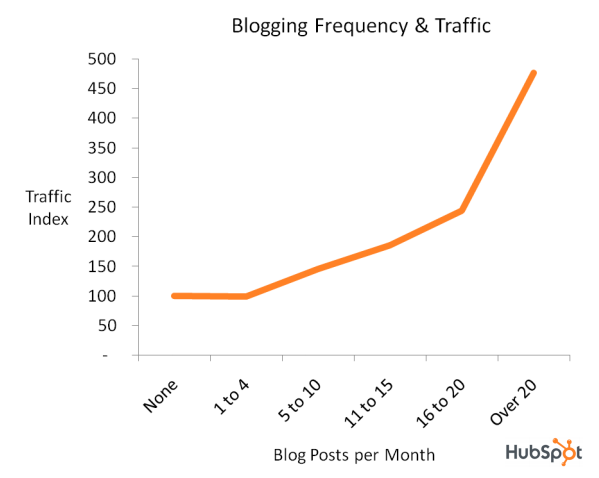
Long-tail keywords can help you build a strong conversion tunnel due to its relevancy for search results. While the overall number of hits is less than conventional keywords, the number of conversions rises with an increase in the definition of a keyword. The long-tail keywords also affect the voice search results directly due to increase definition and relevancy. Studies show that the total voice assistant market has already raced past the 30-million mark back in 2017.
Effective long-tail keywords lay a strong foundation for your digital marketing strategy. Incorporate research strategies as the part of your content marketing plans to increase the effect of your ads. Increase the consistency of posting content to reap the benefits of best marketing strategies and test more plans effectively.
How to Spy on your Competitors to Capture Similar Links?

Competition is not only the basis of protection to the consumer but is the incentive to progress – Herbert Hoover
No matter which industry you belong to or your business niche, competition is always prevalent. Even if you are leading the domain or you are just another start-up company, you should always keep a close watch on your competitors.
Easier said than done, right?
In the fiercely competitive and progressive online world, some people argue that it is easier online as you have everything available within a click time. Moreover, there are plenty of tools to spy on your competitors too.
Undoubtedly, it is true.
However, only when you know what exactly to look for and how to utilize it, there is no point. Even though stalking your competitors does not guarantee success, it is quite a complicated puzzle. Having said that, it could turn out is the single greatest strategy you have ever used. Hence, regardless of how competitive the market is, you should not lose motivation.
Spying on competitors can definitely strengthen your position in this global online marketplace, but with a few critical considerations:
- You must know what you want
- You must know the right tools to derive information
- You must know how to leverage these insights to elevate business
Spying is just another non-technical term for competitor analysis. As you know, competitor analysis can be done in many ways. However, for the benefit of your business, you have to focus on the best tools and most impactful areas for all these categories.

To get an insight into your competitor’s business ideas, you have to tap into each of these fronts namely:
- Social media
- SEO
- Web traffic
- PPC and advertisement
- Blog content
Now, this is a humongous task to accomplish on your own. So, it’s best to use professional tools and strategies to avoid wasting time and build a cost-effective plan.
Here are the best tools for you to start spying on your competitors and conduct an accurate competitor analysis. Let’s start counting:
#1: Rank Signals
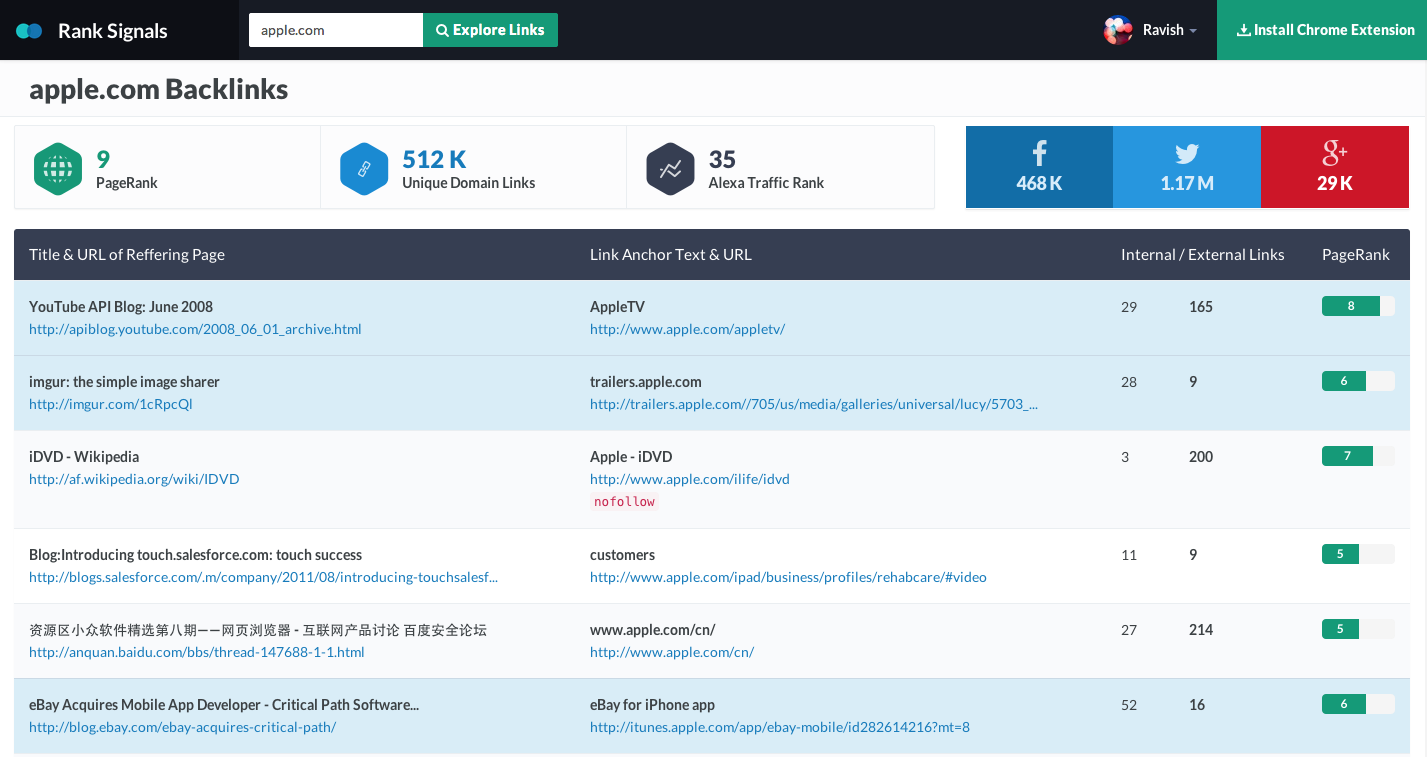
Rank Signals is one of the best tools to determine your competitor’s performance. If you want to build a foundation for an impeccable link building strategy, this is the tool to use. Moreover, it’s a free tool.
You can see the insightful detail data in the picture above, which shows referring pages, anchor text, and URLs. You can target the sites to get backlinks to the content. Sites linking to your competitors have good chances of getting you some trusted links.
#2: SEMrush
SEMrush allows users to track keyword position of the competitors in search engines based on geographical location. It also allows you to discover all the keywords competitors are currently ranking for on a given page. It also helps find keywords driving maximum traffic to the competitor’s site.
Overall SEMrush is an excellent tool for competitor analysis.
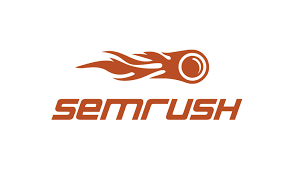
#3: Majestic
For a holistic view of your competitor’s SEO scene, backlinks are necessary. Majestic is the ultimate tool to enhance your analysis. This tool is preferred for analyzing the overall profile of backlink of individual content pieces.
For example, if you want to create a definitive guide to competitor analysis, your goal is to make sure that the post outranks others similar to your site by getting more quality links pointing to that specific content page.
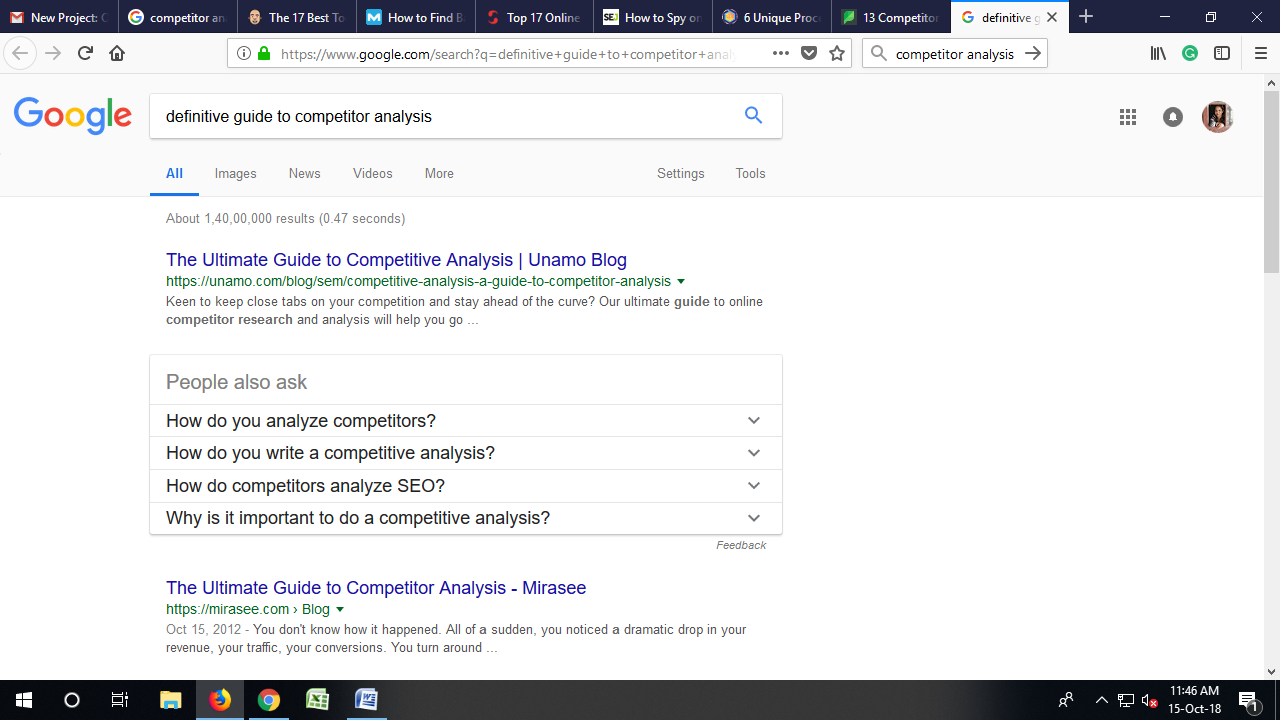
The first step is above – a search to pick a post ranking at the top of Google search engine results pages (SERPs) for the given keyword.
Now, put the webpage URL in the Majestic search bar as shown below:
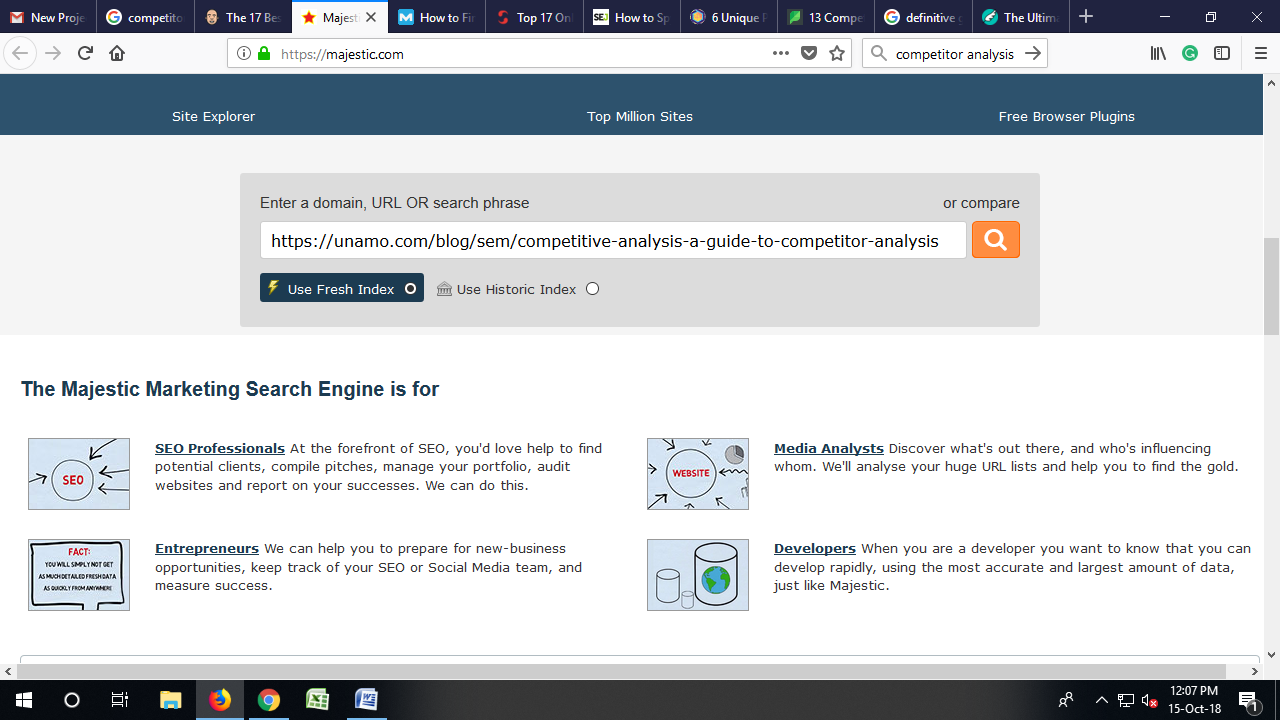
It would give you a clear indication of the number of backlinks content receives.
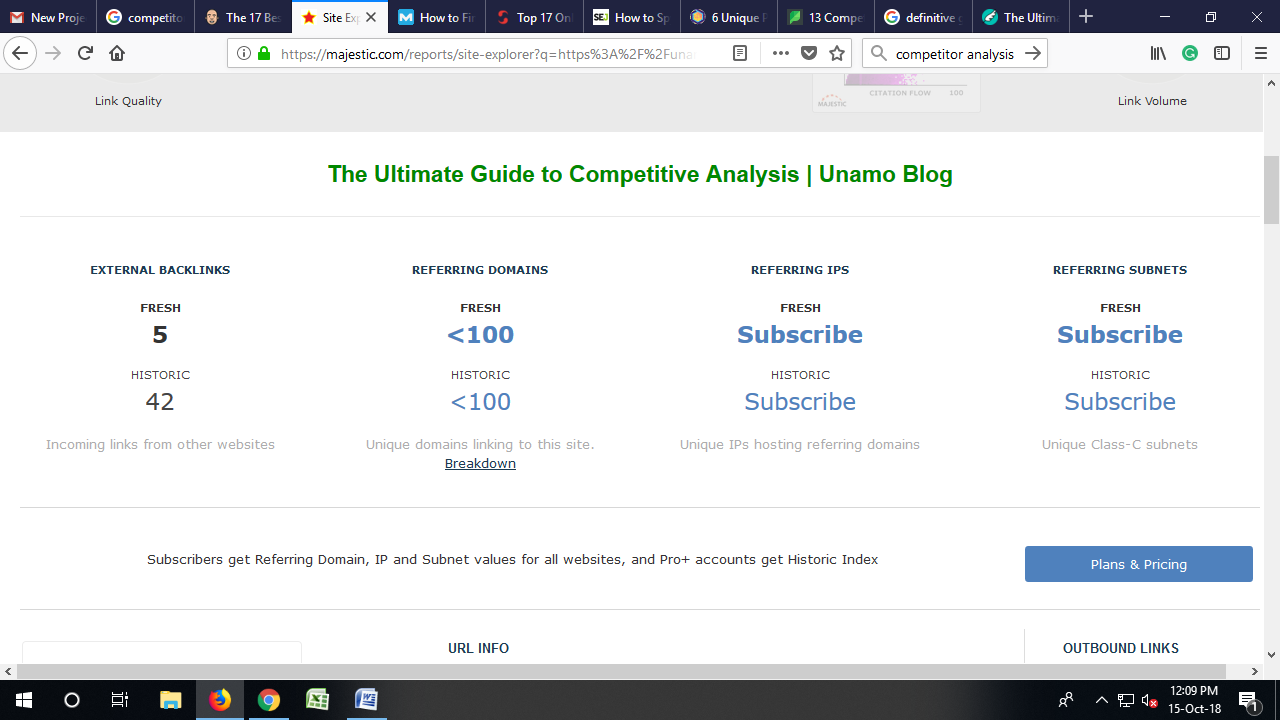
In this way, you know how competitive it is to rank.
Options are available free and paid a subscription. Choose any.
#4: Ahrefs
Ahrefs is much touted as one of the most useful SEO tools till date. If you are not using any other tool, this is the one professionals recommend. You can utilize it for all purposes of competitor analysis.
SEO is a complicated game. So, if you want a tool with utility in various aspects of SEO and featuring the best, Ahrefs is what you need. The major strength of Ahrefs is in backlink analysis and link target selection.
It’s a premium tool. You can sign up and enjoy a free trial.

Ahrefs also helps you to find some critical information about your competitor’s domain authority, referring domains, and new referring domains.
To succeed in this cutting-edge competitive marketplace, you must know how quickly your competitors gain new links, whether they are acquiring several hundreds of links per day, what are their targets etc.
In every sense, data is critically important.
#5: Adbeat
Do you know what your competitors are planning and up to?
If not, you need Adbeat.
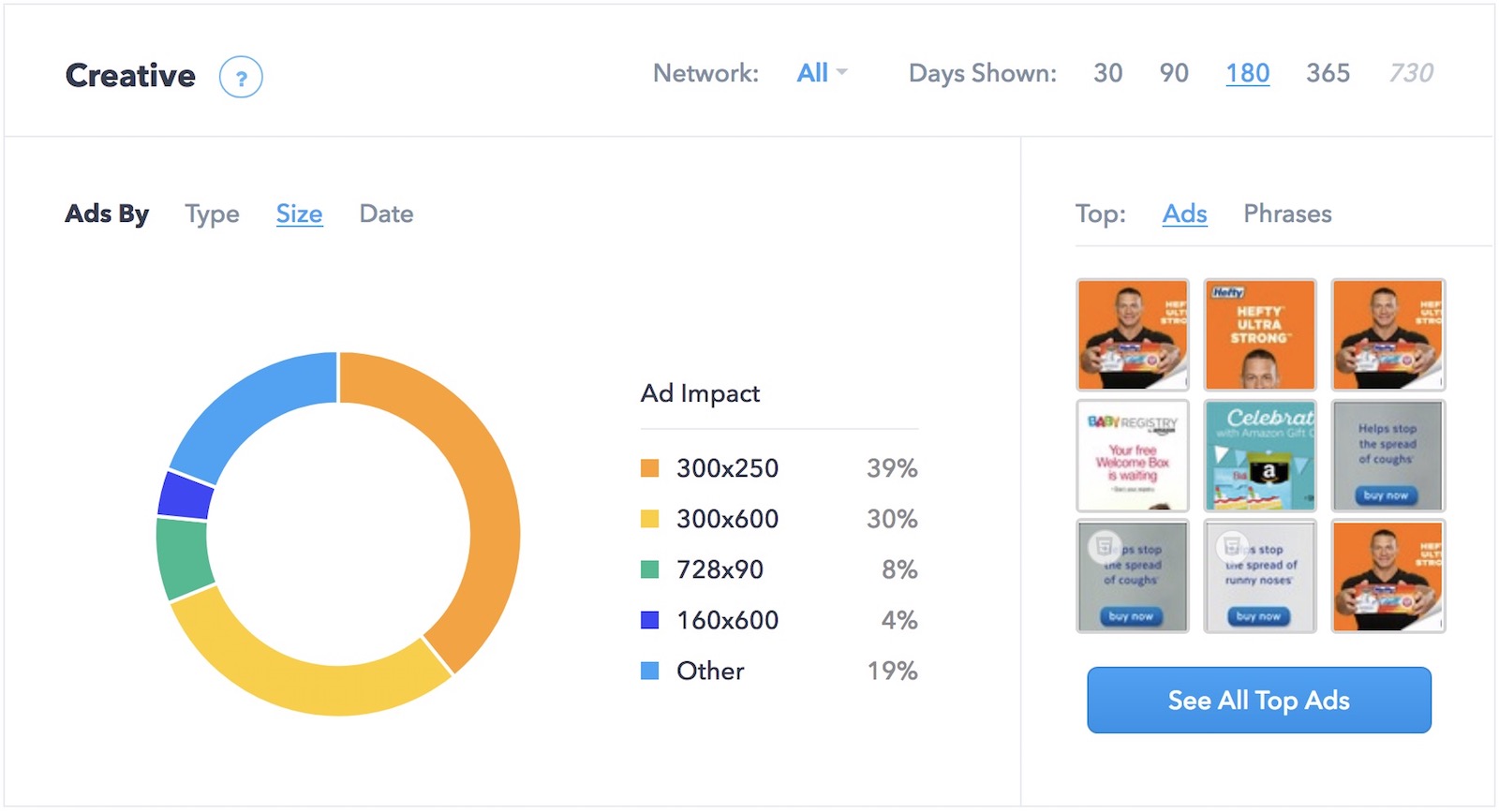
Yes, Adbeat knows it all. It is a brilliant paid advertising tool that gives you access to data providing an insight when you are strategizing the next business move. Using Spider, Crawler, and Collector for crawling and pulling data from more than hundreds and thousands of websites and publishers daily, it gives you optimum results.
The Adbeat Crawler visits each publisher multiple times every day. So, you actually receive the correct data within 24 hours. Moreover, it also helps you to dig up some competitors who were hidden and you are unaware of their existence.
#6: SimilarWeb
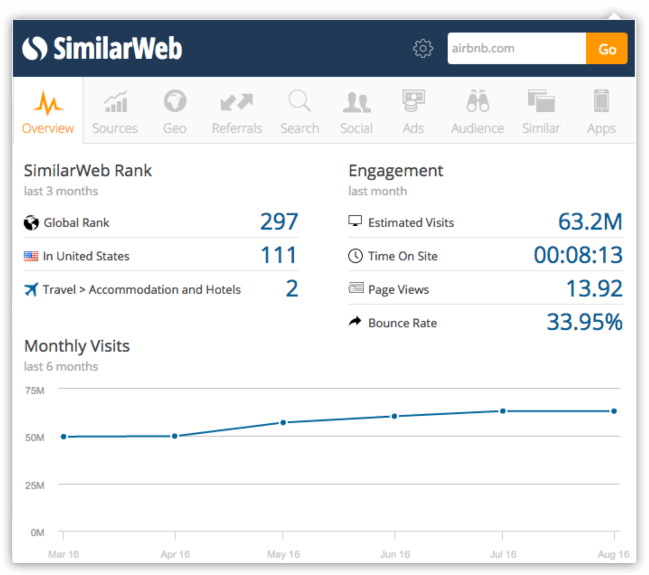
In order to get a clear picture of your competitor’s overall online performance, traffic analysis is the key.
With SimilarWeb, you can find out the monthly traffic of your competitors, channels bringing most visitors to them, and specific points from where those visitors are coming to you. You can also get an overview of their traffic. However, make sure you check out the sources of traffic. You can even get a breakdown of each of the traffic sources.
Here’s analyzing Facebook
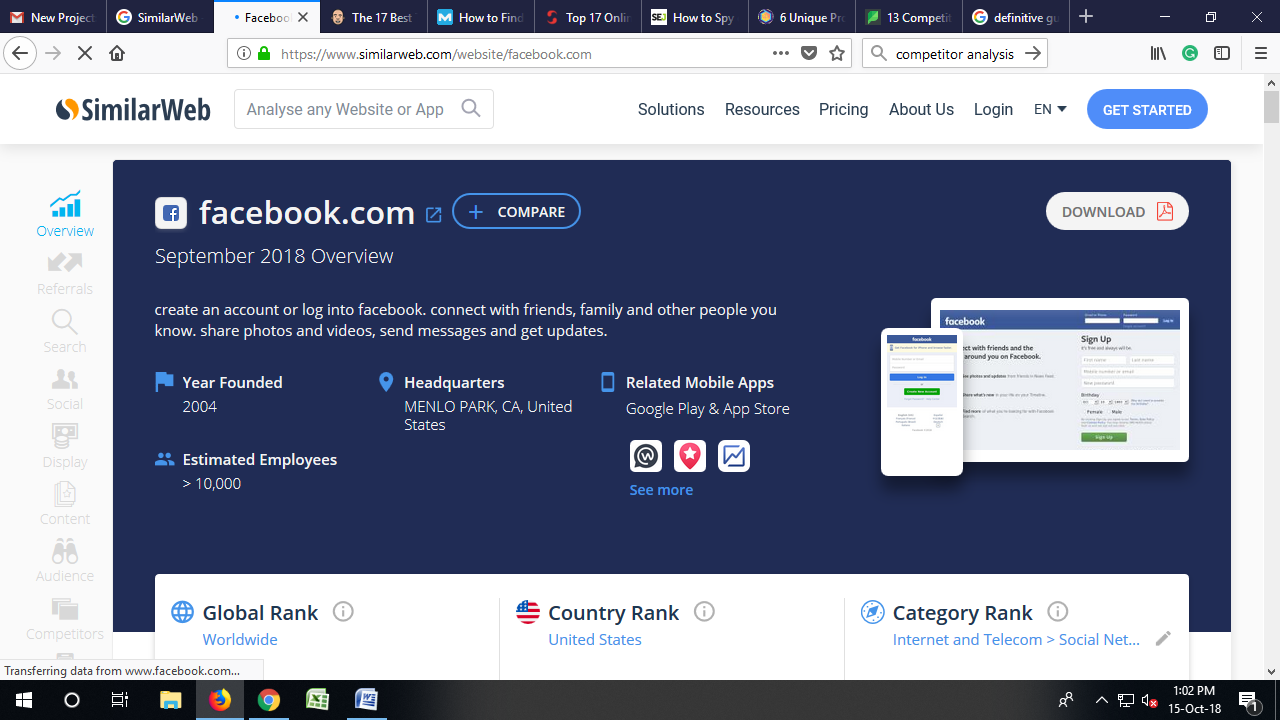
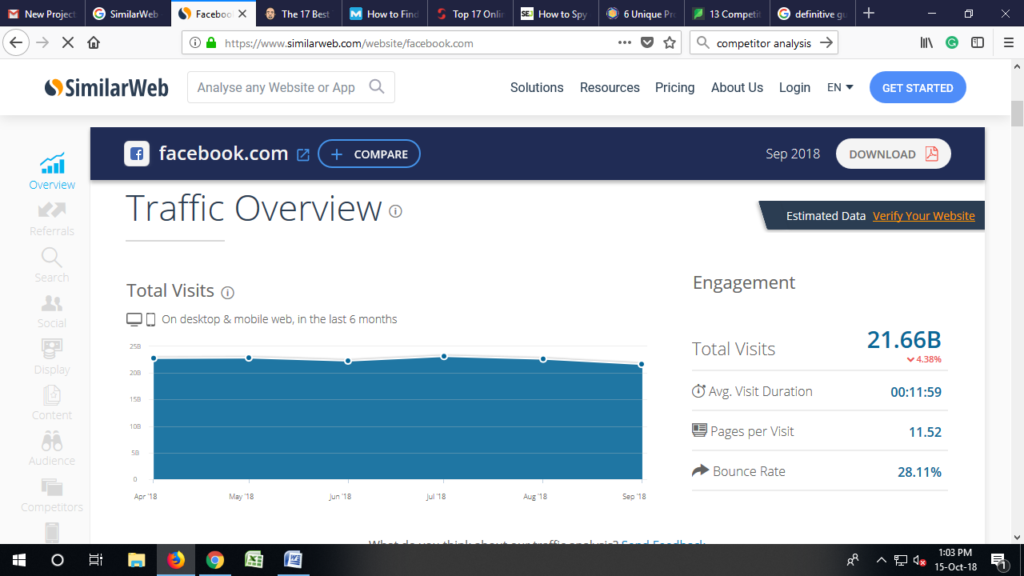
Comparing Facebook and Twitter
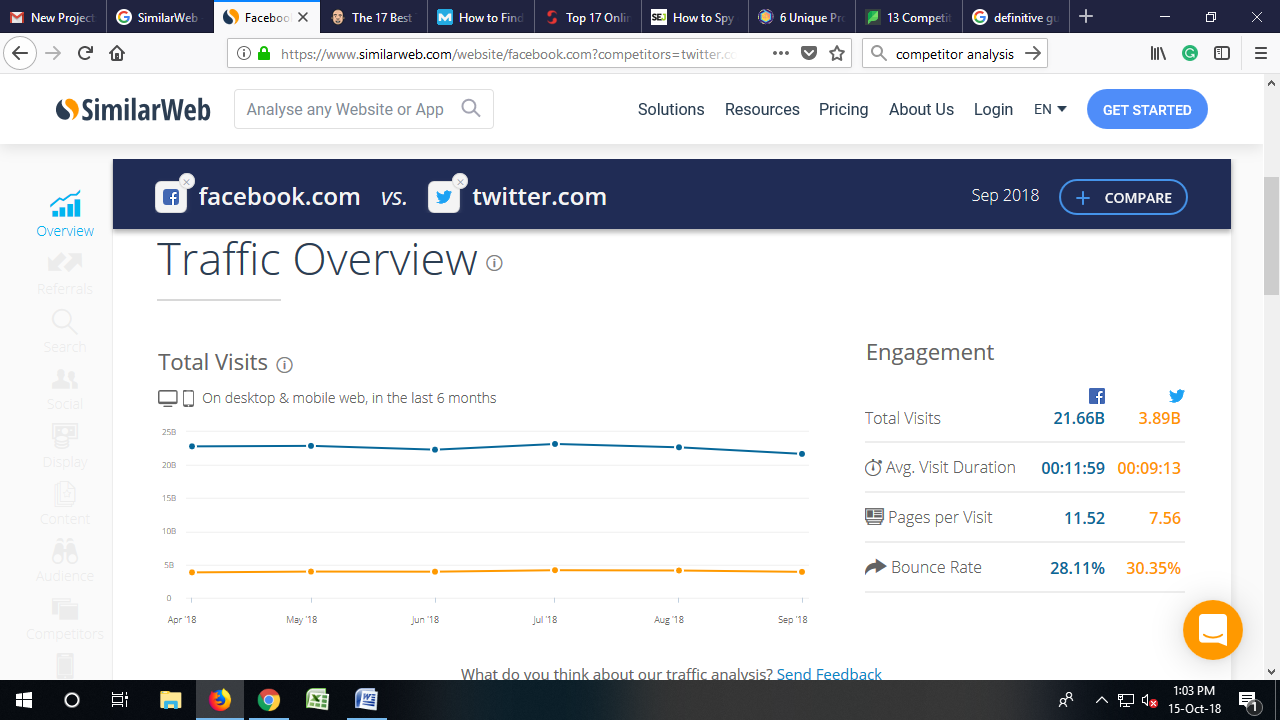
You can also compare several competitors for near perfect analysis.
#7: Google Keyword Planner
If you believe that this is a basic tool, think again!
Google Keyword Planner is the best place to start your keyword research. If you know how to navigate its features, you can also get some insightful data on competitors. In fact, some prominent keyword tools pull data right from here.
The best place to begin is to plug the URL of your competitor into the field that says, “Your Landing Page” and go.
You can get information on new keyword ideas based on competitor’s URL, keyword ad group ideas, and average keywords traffic.
In fact, you may even notice that your competitors are not targeting many keywords, maybe intentionally or not. If a keyword features in some content, it does not necessarily mean it was targeted. So, you can just grab this opportunity to compete for keywords and who knows, you might win.
The only definite way to find out is by plugging keywords into another tool and determining how they rank.
#8: WhatRunsWhere
Another tool that provides smart service for online media purchase. The purpose of this tool is to assist mobile and web advertisers to become more competitive in their approach through smart and intelligent purchase decisions, competition monitoring, and discovering new traffic sources. Furthermore, it also helps users choose decision making clever and tactical advertising strategies to maximize ROI.
#9: Pro Rank Tracker
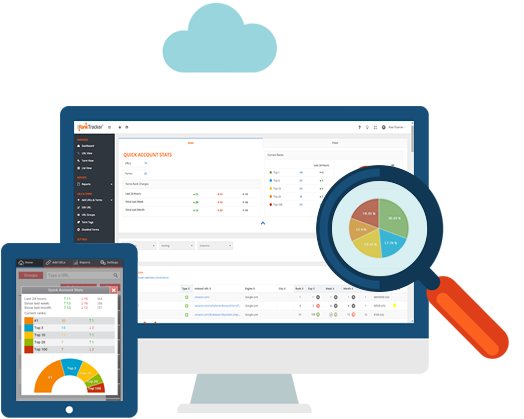
Google now makes it possible to manually check how your keywords rank.
If you have a few hundred hours to spare, it could be a great idea. Pro Rank Tracker is your efficient and proven route to success. A tool allows you to type in the competitor’s URL adding a group of keywords to see how it ranks.
You can create a free account and get started. The only suggestion is to be mindful, as the free version is limited to 20 terms and 2 URLs. You can save all the data to your Pro Rank Tracker dashboard and get some metrics on how the keyword ranks.
Ideally, you may want to target keywords already ranking high up so that you can take optimum advantage of the same. However, if you want to make the most out of this tool and its advanced search feature, paid plans would be better.
#10: Social Mention

There is no better way to spy on your competitors than keeping a track of their social media activity. This is the place where the majority of their businesses invest time and resources these days. Undoubtedly, a great place to start analysis your competitors.
So, how does it work?
By tracking brand mentions – which implies that if you know what is being written and advertised about your competitors, and people mentioning them, you can definitely act on that. A brilliant tool analyses sites based on strength, passion, sentiment, and domain reach.
You can also see how competitors are being mentioned and pay close attention to general data. Then, you can check individual mentions and their sources for relevance. Sources are important as you can then drive traffic to the website and generate high-quality backlinks.
Final Word
It is a competitive landscape and your competitors are just looking for an opportunity to surpass. Analyzing strengths and weaknesses is an integral part of the growth strategy of online businesses. The only sure shot way of outcompeting other players in the space is by getting a holistic and thorough view of their position in the market. Using these tools, you can have a definitive edge. Nevertheless, not just one, you might have to use make tools and sets of data from various sources and connect the loose ends to get the bigger picture.

